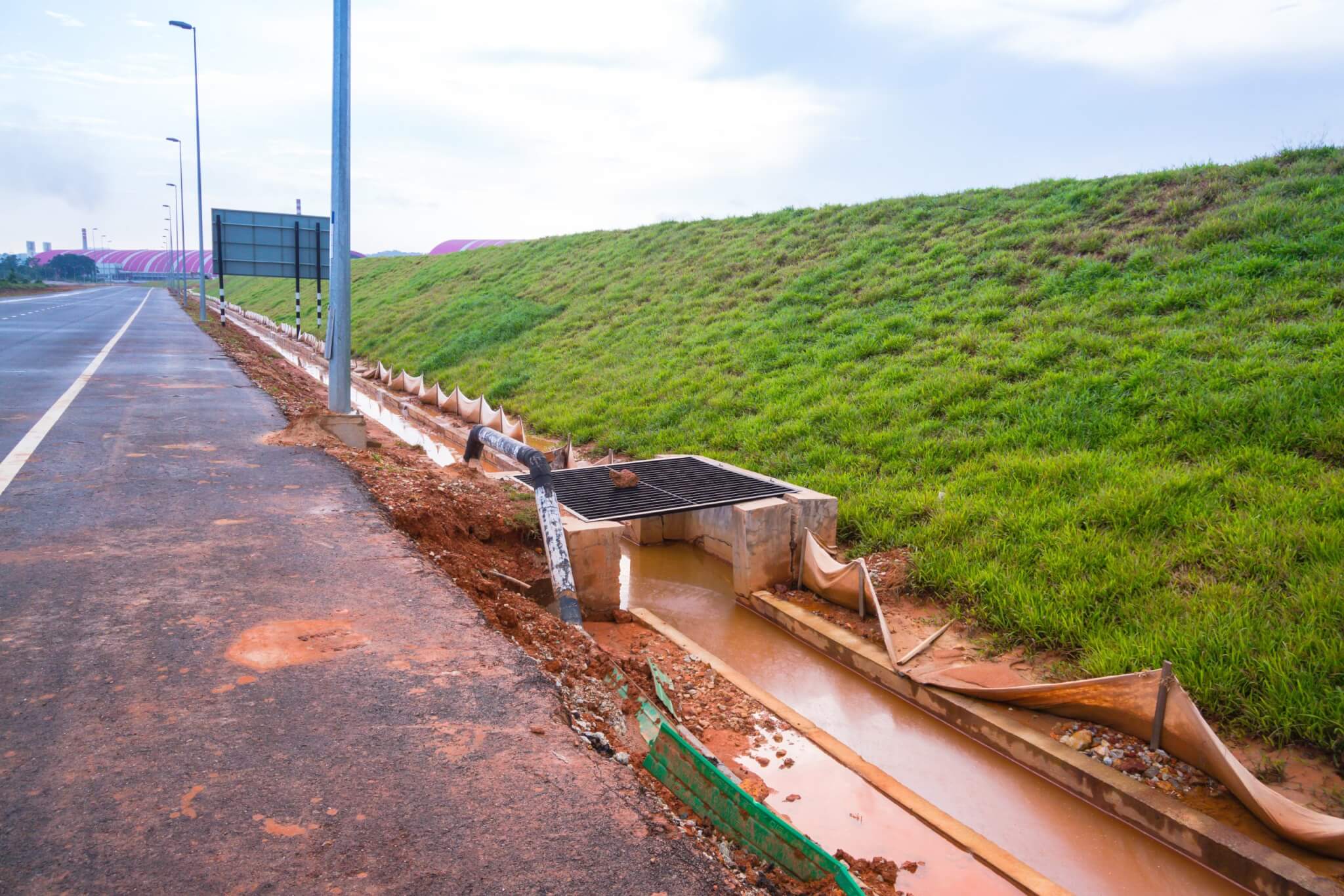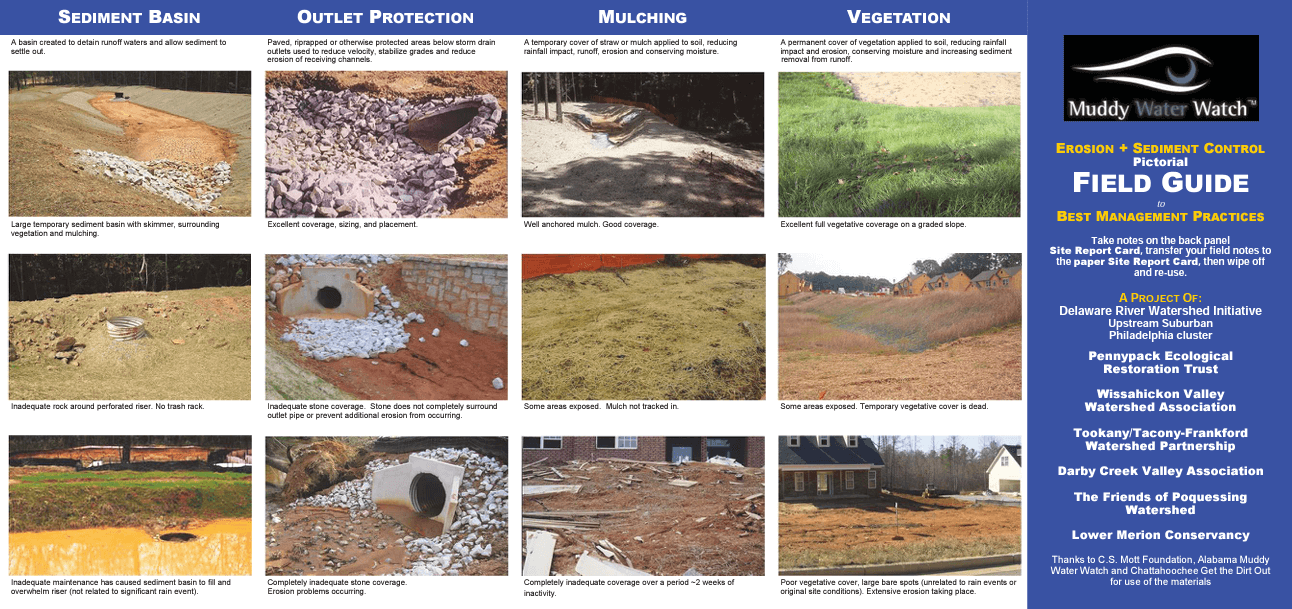Construction Site Monitoring
Construction sites are often the largest sources of sediment pollution. Monitoring and reporting of active construction sites can help to ensure adequate implementation of best management practices (BMPs) and prevent pollution from entering waterways before a major rainstorm hits.
When it rains, stormwater washes over the loose soil on a construction site, along with various materials and products being stored outside. As stormwater flows over the site, it can pick up pollutants like sediment, debris, and chemicals from that loose soil and transport them to nearby storm sewer systems or directly into rivers, lakes, or coastal waters. And that is why it’s necessary to have control structures in place to ensure this doesn’t happen.

Action Steps
- Keep an eye out for active constructive sites in your neighborhood and create a site journal to record all observations. On rainy days or shortly after, observe the integrity of the BMPs on the site and look for evidence of sediment runoff. Check out nearby waterways for signs of sediment pollution and investigate the potential sources (including those upstream of the construction site) for sediment pollution failures. BE CAREFUL NOT TO TRESPASS ON PRIVATE PROPERTY!
- Use the Muddy Water Watch’s Pictorial Field Guide to Best Management Practices to assess onsite BMPs and try to determine their effectiveness. Some discharges from NPDES permitted sites may be included in the permit, so best to focus on the BMPs.
- While onsite, fill out the Site Report Card (side panel of Pictorial Field Guide), later transfer your field notes to a separate document with details, making notes of specific locations on the construction site with problems (for example, northwest corner, eastern edge, along the roadway, etc.).
- Take date and time stamped photographs of the problem areas and practices.
- Try to observe the entire site (without trespassing), not just the front. Use public rights-of-way (roads) as much as possible. Many sites drain to the back of the property. Most violations occur in the back of the property where they are not easily observed.
If the BMPs are not properly maintained based on your observations and the Field Guide:
- Call your local Municipality and the County Conservation District or Water Department.
- Call your state’s Fish & Boat Commission
- Call your state’s environmental department Emergency Hotline if it is an active pollution event
- Call your local Watershed Organization or Monitoring Coordinator
- Create a report log to document who you contacted, the date, and the information you relayed.
The more people who know, the more likely that problems will be corrected.
Follow-Up
- Continue monitoring the site to ensure adequate resolution of the problem.
- Use your site journal and (see Pictorial Field Guide) to continue to note observations and update your report log with responses to your inquiry (or lack of response).
- If you have not received a response to a complaint within a week from Conservation District staff, a second phone call/e-mail may be required. Please note that a response to your complaint may not mean the issue has been resolved. If after two attempts to reach staff fails to yield results, consider calling your local Watershed Advocacy Group and they will advise you on additional ways to resolve the problem.
How the Network Is Monitoring Construction Sites
Tookany/Tacony-Frankford Watershed Partnership (TTF) volunteer Streamkeeper Dave Bell observed muddy water entering a storm drain near a construction site at a local high school. Luckily, he was prepared to take action because TTF and several other local organizations had trained their Streamkeepers to be construction site monitors. Learn about how Dave took action and successfully stopped dirty water from entering the nearby stream.





